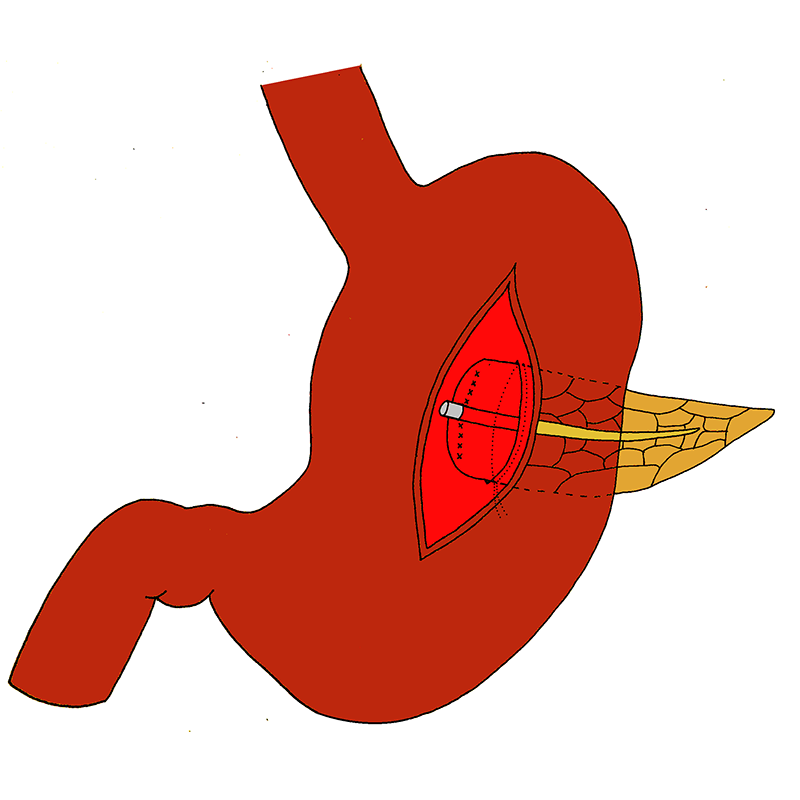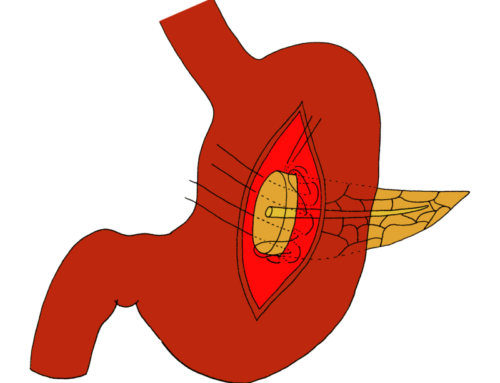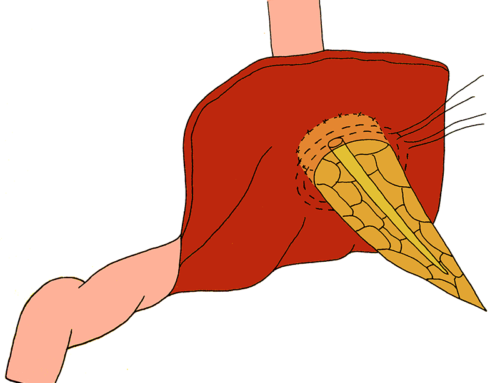The seromuscular layer of the posterior wall of the stomach is excised for a diameter that matches the diameter of the pancreatic stump. A single purse-string suture was placed around the seromuscular excision. Two traction sutures are placed on both sides of the pancreatic parenchyma next to the main pancreatic duct.
Single purse-string duct-to-mucosa transgastric pancreatogastrostomy
- The seromuscular layer of the posterior wall of the stomach is excised for a diameter that matches the diameter of the pancreatic stump.
- A single purse-string suture was placed around the seromuscular excision.
- Two traction sutures are placed on both sides of the pancreatic parenchyma next to the main pancreatic duct.
- A 3-5 cm gastrotomy is performed in the anterior gastric wall.
- In the middle of the seromuscular excision in the posterior wall of the stomach (similar to the position of the main pancreatic duct), a small hole of about 2-5 mm in diameter is made in the exposed mucosa.
- Using the two traction sutures, the main pancreatic duct is pulled into the gastric lumen by bringing the sutures anteriorly, first through the opening in the posterior wall of the stomach and second via the anterior incision. This causes invagination of the pancreas into the gastric lumen with inversion of the gastric mucosa.
- The pancreatic parenchyma of the cut surface surrounding the main pancreatic duct is fixed onto the gastric mucosa, using four stitches on each side of the pancreatic duct.
- The purse-string suture is tied gently; care is taken to avoid occlusion of the main pancreatic duct.
- The anterior gastrotomy is closed.
- Wang X-, Wu X-, Cai Y, et al. Single purse-string duct to mucosa pancreaticogastrostomy: A safe, easy, and useful technique after pancreaticoduodenectomy. J Am Coll Surg. 2015;220:e41-e48.









